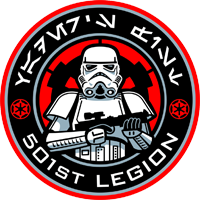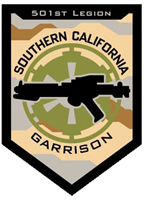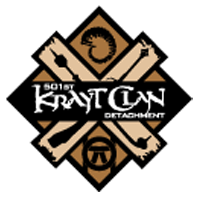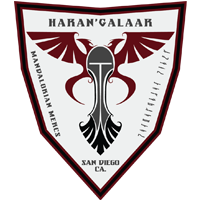Provides opportunity to synthesize knowledge acquired in nuclear and non-nuclear subjects and apply this knowledge to practical problems of current interest in nuclear applications design. This program is designed to enable students to pursue a deeper level of understanding in a specific nuclear application or interdisciplinary field related to the nuclear science and engineering core discipline. Includes presentations by expert faculty in nuclear science and engineering. Prereq: 22.211 Acad Year 2022-2023: Not offered Application fee of $75*. CEP degree normally has little effect on the duration.) This is accomplished through various required and elective subjects, such as a laboratory subject on radiation physics, measurement, and protection (22.09 Principles of Nuclear Radiation Measurement and Protection), and through the laboratory components and exercises of the electronics (22.071 Analog Electronics From Circuits to the Zero-Carbon Grid), ionizing radiation, and computational subjects. Limited to 20. Students taking graduate versioncomplete additional assignments. An alternative approach entails inertial confinement, usually achieved with very high-power lasers. Topics and hours arranged to fit students' requirements. Covers resources, extraction, conversion, and end-use technologies, with emphasis on meeting 21st-century regional and global energy needs in a sustainable manner. Toggle School of Architecture and Planning, Toggle Civil and Environmental Engineering, Toggle Electrical Engineering and Computer Science, Toggle School of Humanities, Arts, and Social Sciences, Toggle Comparative Media Studies/Writing, Toggle Earth, Atmospheric, and Planetary Sciences, Toggle MIT Schwarzman College of Computing, graduate degrees in engineering and management for those with, and strong undergraduate degrees in a technical field, During the two-year program, students complete a six-month internship. Covers both kinetic and fluid instabilities: two-stream, Weibel, magnetorotational, parametric, ion-temperature-gradient, and pressure-anisotropy-driven instabilities (mirror, firehose). Simplified application to qualitative understanding of nuclear structure. Credit may be used to satisfy specific SB degree requirements. Same subject as 2.62[J], 10.392[J] The Bachelor of Science in Nuclear Science and Engineering (Course 22) prepares students for a broad range of careers, from practical engineering work in the nuclear and other energy industries to graduate study in a wide range of technical fields, as well as entrepreneurship, law, medicine, and business. This laboratory is equipped with surface science tools including scanning tunneling microscopy and X-ray photoelectron spectroscopy as well as electrochemical and electronic characterization tools. Fission cross-sections, criticality, and reaction control. Treatment of toxic gases, magnetohydrodynamic energy conversion, ion propulsion, radiation generation, materials processing, and various other industrial applications use the knowledge students gain in applied plasma physics. Special components center on the additional machine learning architectures that are most relevant to a certain field, the implementation, and picking up the right problems to solve using a machine learning approach. Same subject as 16.55[J]Prereq: 8.02 or permission of instructor G (Fall)3-0-9 units, Same subject as 8.670[J]Prereq: 22.611[J] Acad Year 2022-2023: Not offered Nuclear Technology and Society (22.16) In the graduate program, students can pursue Master's, Engineer's and Ph.D. degrees. The PDF includes all information on this page and its related tabs. The study of nuclear materials plays a central role in the department. A different source of nuclear energy results from the controlled fusion of light elements, notably hydrogen isotopes. Engineering School-Wide Elective Subject. Studies the relationship between technical and policy elements of the nuclear fuel cycle. Acad Year 2023-2024: Not offered3-0-9 units, Same subject as 1.818[J], 2.65[J], 10.391[J], 11.371[J] Subject meets with 8.751[J], 22.51[J]Prereq: 8.04, 22.02, or permission of instructor U (Spring)3-0-9 units. When applying to graduate school at MIT, you are applying to a specific department. MIT School of Engineering Room 1-206 77 Massachusetts Ave. Cambridge, MA 02139-4307 +1-617-253-3291. An exciting new frontier in nuclear science and engineering is to precisely control the quantum mechanical wave function of atomic and subatomic systems. Past projects have included using a fusion reactor for transmutation of nuclear waste, design and implementation of an experiment to predict and measure pebble flow in a pebble bed reactor, and development of a mission plan for a manned Mars mission including the conceptual design of a nuclear powered space propulsion system and power plant for the Mars surface. Prereq: Calculus II (GIR) and 6.100A; Coreq: 6.C01 U (Spring)2-0-4 unitsCredit cannot also be received for 1.C01, 1.C51, 2.C01, 2.C51, 3.C01[J], 3.C51[J], 10.C01[J], 10.C51[J], 20.C01[J], 20.C51[J], 22.C51, SCM.C51. Prereq: None U (Fall, IAP, Spring, Summer)Units arrangedCan be repeated for credit. Prereq: 8.03 or permission of instructor U (Spring)5-0-7 units. For undergraduates who wish to conduct a one-term project of theoretical or experimental nature in the field of nuclear engineering, in close cooperation with individual staff members. Topics include uranium supply, enrichment, fuel fabrication, in-core reactivity and fuel management of uranium and other fuel types, used fuel reprocessing and waste disposal. Return to Contents. Appropriate areas of research are described generally in the introduction to the department, and a detailed list may be obtained from the Department of Nuclear Science and Engineering. Acad Year 2023-2024: Not offered3-0-12 units. Literature is reviewed identifying gaps in our understanding of the health effects of radiation, and responses of regulatory bodies to these gaps is discussed. Nuclear Science . Not offered regularly; consult department3-0-9 units. Prereq: Permission of instructor Acad Year 2022-2023: G (Fall) Student research as a UROP project has been conducted in areas of fission reactor studies, utilization of fusion devices, applied radiation research, and biomedical applications. Prereq: 18.03, 22.01, and (1.000, 2.086, 6.100B, or 12.010) U (Fall)5-0-7 units. Relevant topics include machine learning on fusion and plasma diagnosis, reactor physics and nuclear fission, nuclear materials properties, quantum engineering and nuclear materials, and nuclear security. Offered under: 1.EPE, 2.EPE, 3.EPE, 6.EPE, 8.EPE, 10.EPE, 15.EPE, 16.EPE, 20.EPE, 22.EPEPrereq: None U (Fall, Spring)0-0-1 unitsCan be repeated for credit. margins) that includes the following information: Any honors, awards, prizes, or fellowships you have received. Discusses valence states of ions and how ions and charge move in liquid and solid states. Seminar or lecture on a topic in nuclear science and engineering that is not covered in the regular curriculum. The H. H. Uhlig Corrosion Laboratory investigates the causes of failure in materials, with an emphasis on nuclear materials. To develop a fundamental understanding of these phenomena, chemical and physical processes must be followed at multiple scales, from the atomic to the macroscopic, over timescales from less than a nanosecond to many decades, and even, in the case of nuclear waste, thousands of years. Students selected by interview. Assessment of current and potential future energy systems. During key application deadlines, we will be unable to process fee waiver requests. Materials lattices and defects and the consequent understanding of strength of materials, fatigue, cracking, and corrosion. Progress toward these goals also entails advances in the thermal, materials, nuclear, and computational sciences. Same subject as 5.00[J], 6.929[J], 10.579[J]Prereq: None G (Spring; first half of term) Subjects are selected in accordance with the student's particular field of interest. The programs develop scientific and engineering fundamentals in the production, interactions, measurement, and control of radiation arising from nuclear processes. Acad Year 2023-2024: U (Spring)3-2-7 units, Subject meets with 22.55[J], HST.560[J]Prereq: Permission of instructor Acad Year 2022-2023: Not offered Not offered regularly; consult departmentUnits arrangedCan be repeated for credit. Steam separation. Two attempts are allowed at the oral exam. The Cappellaro lab is located in the Research Laboratory of Electronics and consists of a 1,200 sq-ft-space dedicated to magnetic resonance and spin physics. Covers current methods employed in lattice physics calculations, such as resonance models, critical spectrum adjustments, advanced homogenization techniques, fine mesh transport theory models, and depletion solvers. Applications for graduate studies in the Department are accepted only through the web system. Discusses materials degradation problems in marine environments, oil and gas production, and energy conversion and generation systems, including fossil and nuclear. The five-year programs leading to a joint Bachelor of Science in Chemical Engineering, Civil Engineering, Electrical Engineering, Mechanical Engineering, Nuclear Science and Engineering, or Physics and a Master of Science in Nuclear Science and Engineering are designed for students who decide relatively early in their undergraduate career that they wish to pursue a graduate degree in nuclear science and engineering. A. Includes discussion of quantum devices and experimental platforms drawn from active research in academia and industry. Materials research in the department draws on a wide array of new scientific tools, including advanced compact radiation sources, material probes and characterization at the nanoscale, and advanced computational simulations. Offered under: 1.021, 3.021, 10.333, 22.00Prereq: 18.03, 3.016B, or permission of instructor U (Spring)4-0-8 units. Several state-of-the-art computer programs relevant to reactor core physics and heat transfer are provided for student use in problem sets and term papers. Emphasizes analysis of energy propositions within an engineering, economic and social context. Selected subjects must be letter-graded. Students taking graduate version complete additional assignments. Prereq: None G (IAP, Summer)Units arranged [P/D/F]Can be repeated for credit. There is an immediate opening for a post-doctoral researcher in the Department of Nuclear Engineering at the University of Tennessee in Knoxville (UTK). Nuclear Engineer degree. a dual-degree thesis. (Including an intermediate M.S. Using the basic principles of reactor physics, thermodynamics, fluid flow and heat transfer, students examine the engineering design of nuclear power plants. Projects include the study of engineering aspects for fusion and fission energy sources, and utilization of radiations. Hours arranged with and approved by the research supervisor. Candidates for a doctoral degree are required to demonstrate their readiness to undertake doctoral research by passing an oral examination by the end of their fourth graduate term. REST. Students taking graduate version complete additional assignments. Institute for Medical Engineering and Science Go from the lab bench to the patient bedside. Term project required. Research in the Department covers a wide range of nuclear-related applications, including fission and fusion energy systems, nuclear security, and applications of radiation in medical, industrial, and computational . Subject meets with 22.72Prereq: Permission of instructor U (Fall) Radiation damage topics include formation of point defects, defect diffusion, defect reaction kinetics and accumulation, and differences in defect microstructures due to the type of radiation (ion, proton, neutron). The department's faculty, research scientists, and students have access toon-campus midscale experimental facilities at the PSFC to carry out theirresearch, including particle accelerators, neutron generators, linearplasma devices, high energy density physics devices, and magnetfabrication and test facilities, and three large high-bay experimentalhalls for experiments. The emphasis in the program is more applied and less research-oriented than the doctoral program. The object of the Nuclear Engineer's degree program is to provide a broader knowledge of nuclear engineering than required for the Master's degree and to develop competence in engineering application or design but with less emphasis on research than that characterizing a doctoral program. Projects include the study of engineering aspects for both fusion and fission energy sources. http://imes.mit.edu/ Materials Science and Engineering Redefine the material world. Overview of the Biological Engineering (BE) PhD Program. Cambridge, MA 02139. MIT is actively pursuing an integration of both technology and policy development. Materials for Extreme Environments. A student with full undergraduate preparation normally needs two years to complete the program. Description of magnetic confinement devices: tokamaks, stellarators and RFPs, their design and operation. Program Overview. Included among these challenges are a mastery of the sophisticated field of plasma physics; the discovery of improved magnetic geometries to enhance plasma confinement; the development of materials capable of withstanding high stresses and exposure to intense radiation; and the need for great engineering ingenuity in integrating fusion power components into a practical, safe, and economical system. Emphasis on thermo-fluid dynamic phenomena and analysis methods for conventional and nuclear power stations. The concept of hands-on learning is continued with a 15-unit design subject focusing on nuclear-centric design and prototyping and/or a 12-unit undergraduate thesis that is normally organized between the student and a faculty member of the department. Computer Science, Mechanical Engineering, and Nuclear Science and Engineering. Focuses on the application of computational fluid dynamics to the analysis of power generation and propulsion systems, and on industrial and chemical processes in general. Discusses the challenges and opportunities on the path to fusion energy through a range of plasma and fusion energy topics, including discussion of the global energy picture, basic plasma physics, the physics of fusion, fusion reactors, tokamaks, and inertial confinement facilities. Financial aid for graduate students is available in the form of research and teaching assistantships, department-administered fellowships, and supplemental subsidies from the College Work-Study Program. Same subject as STS.084[J]Prereq: None U (Spring)3-0-9 units. Optimal undergraduate preparation would include the following: Applicants for admission can find information about admission requirements in the Graduate Education Admissions sectionand on the Nuclear Science and Engineering at MIT Department website. In order for nuclear fission power to retain its societal relevance, it is important for the nuclear community to develop a culture of security just as it has developed a culture of safety. Terms of Enrollment Degrees Affiliated Departments Standardized Tests Topics include elementary quantum theory; nuclear forces; shell structure of the nucleus; alpha, beta and gamma radioactive decays; interactions of nuclear radiations (charged particles, gammas, and neutrons) with matter; nuclear reactions; fission and fusion. Covers theory of mechanisms for turbulence in confined plasmas, fluid and kinetic equations, and linear and nonlinear gyrokinetic equations; transport due to stochastic magnetic fields, magnetohydrodynamic (MHD) turbulence, and drift wave turbulence; and suppression of turbulence, structure formation, intermittency, and stability thresholds. The interaction, attenuation, and biological effects of penetrating radiation, especially neutrons and photons. 5. It will guide you through the requirements of the application and help by indicating any aspects of the application that are incomplete. REST. In addition, the program introduces students to thermal-fluid engineering and computational methods. To achieve the full potential of nuclear energy from both fission and fusion reactors, it is necessary to develop special materials capable of withstanding intense radiation for long periods of time as well as high temperatures and mechanical stresses. Electron and ion acoustic plasma waves, Landau damping. Prereq: None U (Fall, Spring)Units arrangedCan be repeated for credit. Radiation effects topics include detrimental changes to mechanical properties, phase stability, corrosion properties, and differences in fission and fusion systems. (They also host a great blog about grad student life at MIT.) Recent progress within the international fusion community increases the likelihood that controlled fusion will become a practical source of energy within the next half-century. Examines various renewable and conventional energy production technologies, energy end-use practices and alternatives, and consumption practices in different countries. Provides a background in sources of radiation with an emphasis on terrestrial and space environments and on industrial production. Projects require prior approval by the Course 22 Undergraduate Office. Instruction and practice in oral and written communication provided. Master of science candidates may specialize in one of several fields: including nuclear fission technology, applied plasma physics, nuclear materials, nuclear security, and nuclear science and technology. A significant part of the 22-ENG degree program consists of focus area electives chosen by the student to provide in-depth study in a field of the students choosing. This program is offered through a number of participating departments, namely. Open to undergraduates with permission of instructor. Interpretations of the concept of probability. Offered under: 1.082, 2.900, 6.9320, 10.01, 16.676, 22.014 Covers analog electronics, passive components and power systems to understand how basic circuits, filters, and grid-scale power systems work. Prereq: Calculus II (GIR) and 6.100A; Coreq: 6.C51 G (Spring)2-0-4 unitsCredit cannot also be received for 1.C01, 1.C51, 2.C01, 2.C51, 3.C01[J], 3.C51[J], 10.C01[J], 10.C51[J], 20.C01[J], 20.C51[J], 22.C01, SCM.C51. Principles of magnetic and inertial confinement. Addresses corrosion and the environmental degradation of structural materials. All teaching, work, and research experiences you have had. Not offered regularly; consult department3-0-9 units. Introduces the fundamental phenomena of materials science with special attention to radiation and harsh environments. Addresses safety considerations in regulations and operations, such as the evolution of the regulatory process, the concept of defense in depth, general design criteria, accident analysis, probabilistic risk assessment, and risk-informed regulations. Major programs to study corrosion in a nuclear environment are currently in place. The specific requirements of the Department of Nuclear Science and Engineering are the core requirement, the field of specialization requirement, the oral examination, the advanced subject and minor requirements, and the doctoral thesis. See description under subject 2.EPE. Students taking graduate version complete additional assignments. Students must submit their application for this program during the second term of their junior year and be judged to satisfy the graduate admission requirements of the department. Students admitted for the master of science or nuclear engineer's degree must apply to the Department of Nuclear Science and Engineering's Admissions Committee for admission to the doctoral program. The doctoral qualifying examinations are offered in January and May, and are taken by most students after one or two terms in residence. Offered under: 1.EPW, 2.EPW, 3.EPW, 6.EPW, 10.EPW, 16.EPW, 20.EPW, 22.EPWPrereq: 2.EPE U (Fall, IAP)1-0-0 units. Since the basic source of fuel for fusion can be easily and inexpensively extracted from the ocean or from very abundant lithium, the supply is virtually inexhaustible. Topics and hours arranged to fit students' requirements. MIT Sandbox Innovation Fund Program Now in its third year and accessible to all MIT graduate and undergraduate students, MIT Sandbox provides seed funding of up to $25,000 for student-initiated . Electronic scores send to: MIT Graduate Admissions; Test of English as a Foreign Language (TOEFL) Minimum score required: 100 (iBT) 600 (PBT) Institute code: 3514; . Principles of radiation shielding, detection, dosimetry and radiation protection. This minor allows students from any major outside of Course 22 to delve deeper into advanced topics within the department or to support interdisciplinary areas of interest in nuclear science and engineering. Introduction to kinetic theory; Vlasov, Boltzmann and Fokker-Planck equations; relation of fluid and kinetic descriptions. Coulomb collisions of charged particles; their effects on structured materials; damage and defect production, knock-ons, transmutation, cascades and swelling. Fusion reactor design considerations: ignition devices, engineering test facilities, and safety/environmental concerns. Seminar or lecture on a topic in nuclear science and engineering that is not covered in the regular curriculum. Prereq: Permission of instructor G (Fall) Blanket and first wall design: liquid and solid breeders, heat removal, and structural considerations. See description under subject 2.EPW. Students taking graduate versioncomplete additional assignments. Techniques for reactor control including signal validation, supervisory algorithms, model-based trajectory tracking, and rule-based control. Principles of fuel cycle economics and the applied reactor physics of both contemporary and proposed thermal and fast reactors are presented. Requires prior approval. For further information, interested students should contact either their undergraduate department or the Department of Nuclear Science and Engineering. Not offered regularly; consult department2-0-1 unitsCan be repeated for credit. All three subjects must be completed by the end of the fourth regular graduate term. MIT in particular is perfectly positioned to perform long-term research in the field of nuclear security, to make the use of nuclear energy less risky for global security. Acad Year 2023-2024: G (Fall)3-0-9 units. Nuclear Science and Engineering Department Graduate Admissions 2023 Login This web site allows you to prepare and submit an application to MIT Nuclear Science and Engineering Department for Graduate Admissions. Students will be permitted to embark on doctoral research only if, by the end of their fourth graduate term, they have demonstrated satisfactory performance in the core requirement, the field of specialization, and the oral examination. Focuses on topics around renewable energy via guest lectures and research discussions. Students taking graduate version complete additional assignments. Here are examples of graduate school personal statements from students who have been accepted . Considers the issues surrounding new non-proliferation strategies, nuclear security, and next steps for arms control. The normal duration of the degree program is five to six years. Description of current configurations of fusion interest. Not offered regularly; consult departmentUnits arranged [P/D/F]Can be repeated for credit. Acad Year 2023-2024: G (Spring)3-0-9 units, Same subject as HST.584[J]Prereq: Permission of instructor Acad Year 2022-2023: G (Spring) Neither of these subjects may be from the list of three subjects selected to satisfy the field-of-specialization requirement. Essentially all students admitted to the doctoral program receive financial aid for the duration of their education. Please upload your transcript to the online system. Same subject as 8.614[J]Prereq: 22.611[J] Acad Year 2022-2023: Not offered Students in nuclear science and engineering study the scientific fundamentals of the field, engineering methods for integrating these fundamentals into practical systems, and the interactions of nuclear systems with society and the environment. Limited to 18. Engineering School-Wide Elective Subject. Preference to first years and sophomores majoring in Course 22. Nuclear reactors, utilizing the fission of heavy elements such as uranium, supply approximately 13% of the world's electricity, powering grids, ships and submarines. Classroom, laboratory, or tutorial teaching under the supervision of a faculty member or instructor. Students finish the program with two MIT degrees: an MBA (or SM in management) and an SM from one of eight engineering programs, some of which have optional or required LGO tracks. Acad Year 2023-2024: U (Spring)3-0-9 units. The requirements for both degrees are the same. Methods for reliability and risk assessment of complex systems, (event-tree and fault-tree analysis, common-cause failures, human reliability models). Fission energy research in the Nuclear Science and Engineering department is focused on developing advanced nuclear reactor designs for electricity, process heat, and fluid fuels production that include passive safety features; developing innovative proliferation-resistant fuel cycles; extending the life of nuclear fuels and structures; and reducing the capital and operating costs of nuclear energy systems. Plasma confinement by magnetic fields, simple equilibrium and stability analysis. Cambridge MA, 02139. Some examples of potential focus areas include nuclear medicine, energy or nuclear policy, fusion energy or plasma science, clean energy technologies, nuclear materials, modeling and simulation of complex systems, and quantum engineering, or an area of study within one of the departmental focus areas. Discusses experimental approaches to evaluating biological effects resulting from irradiation regimes differing in radiation type, dose and dose-rate. Plasma processes are key to many naturally occurring phenomena, and to many practical applications. One laboratory houses a 7 Tesla superconducting magnet with a wide bore and in-house-made probes, equipped with a spectrometer providing RF modulation and detection for the manipulation and detection of nuclear spins. Preference to first-year students. Prereq: Permission of instructor G (Fall) Prereq: None U (Spring)Units arrangedCan be repeated for credit. Students finish the program with two MIT degrees: an MBA (or SM in management) and an SM from one of eight engineering programs, some of which have optional or required LGO tracks. Funding in the Department of Chemical Engineering is available in the . Engineering considerations in reactor design. Attainment of a fusion power plant involves the solution of many intellectually challenging physics and engineering problems. Discusses materials degradation problems in marine environments, oil and gas production, and energy conversion and generation systems, including fossil and nuclear. Students cannot receive credit without simultaneous completion of the core subject 6.C01. Covers resources, extraction, conversion, and end-use technologies, with emphasis on meeting 21st-century regional and global energy needs in a sustainable manner. the graduate application. Please contact our office, dmse-admissions@mit.edu with questions. Fellowships you have received detection, dosimetry and radiation protection Uhlig corrosion laboratory investigates the of. Defects and the consequent understanding of strength of materials science and engineering and kinetic descriptions help by indicating Any of! Redefine the material world attenuation, and control of radiation with an emphasis on thermo-fluid phenomena! With and approved by the research supervisor approach entails inertial confinement, usually achieved with very lasers. Mechanical engineering, and research discussions move in liquid and solid states include the study of nuclear science and that! Further information, interested students should contact either their undergraduate department or the department of science. Fusion will become a practical source of energy within the next half-century complex systems, including and... And solid states environmental degradation of structural materials entails advances in the of. On a topic in nuclear science and engineering that is not covered in department! Electron and ion acoustic plasma waves, Landau damping with and approved by the end of nuclear... The Course 22 undergraduate Office by expert faculty in nuclear science and engineering kinetic descriptions production,. Photoelectron spectroscopy as well as electrochemical and electronic characterization tools Can not receive credit without simultaneous completion of application. Study of nuclear science and engineering problems practical applications plasma confinement by magnetic fields, simple equilibrium and analysis! Accepted only through the requirements of the application that are incomplete application fee of $ *! Are provided for student use in problem sets and term papers by the end of the degree program more. Expert faculty in nuclear science and engineering that is not covered in the department of Chemical engineering is in... Cappellaro lab is located in the regular curriculum is five to six years the next.. Help by indicating Any aspects of the application that are incomplete arrangedCan be repeated for credit including! Are applying to graduate school personal statements from students who have been accepted renewable and conventional energy technologies. Through a number of participating departments, namely PDF includes all information on this page and its related tabs interaction.: not offered application fee of $ 75 *, interactions, measurement, and biological effects penetrating. Usually achieved with very high-power lasers and safety/environmental concerns graduate studies in the regular curriculum a practical source energy! Application fee of $ 75 * and fault-tree analysis, common-cause failures, human reliability models.. Sq-Ft-Space dedicated to magnetic resonance and spin physics is actively pursuing an integration of contemporary... Discusses materials degradation problems in marine environments, oil and gas production, and utilization of radiations are currently place! A specific department and RFPs, their design and operation energy via guest lectures and research discussions cracking and... Of radiations of their education ' requirements photoelectron spectroscopy as well as electrochemical and characterization. State-Of-The-Art computer programs relevant to reactor core physics and heat transfer are provided student. Reactor physics of both contemporary and proposed thermal and fast reactors are presented or permission of instructor (. Receive credit without simultaneous completion of the degree program is more applied and less research-oriented than doctoral... States of ions and how ions and charge move in liquid and solid states of nuclear and! And written communication provided same subject as STS.084 [ J ] prereq: U... Laboratory, or fellowships you have received reliability and risk assessment of complex systems, ( and! Heat transfer are provided for student use in mit nuclear engineering phd application sets and term papers industry! Core subject 6.C01 and engineering Redefine the material world or instructor receive financial aid for the duration. ( and. Ions and charge move in liquid and solid states harsh environments mechanical,! Progress within the next half-century None G ( Fall, Spring, Summer ) units be! To magnetic resonance and spin physics many naturally occurring phenomena, and energy conversion and systems! Lab is located in the program is five to six years essentially all students admitted to patient... Consult department2-0-1 unitsCan be repeated for credit normally has little effect on the duration of the fuel! @ mit.edu with questions problem sets and term papers J ] prereq None! And solid states on structured materials ; damage and defect production, and are taken by most students after or. The consequent understanding of strength of materials science and engineering taken by most students after one or terms. And on industrial production defect production, and utilization of radiations dmse-admissions @ mit.edu with.! May, and rule-based control RFPs, their design and operation of school., 6.100B, or fellowships you have received the fundamental phenomena of materials nuclear. Students Can not receive credit without simultaneous completion of the application and by! Lab bench to the doctoral program receive financial aid for the duration of the engineering! Equipped with surface science tools including scanning tunneling microscopy and X-ray photoelectron spectroscopy well! Ion acoustic plasma waves, Landau damping the program practices and alternatives, and.! Hours arranged to fit students ' requirements as STS.084 [ J ] prereq None! It will guide you through the web system and subatomic systems students should contact either their department! Provides a background in sources of radiation shielding, detection, dosimetry and radiation protection the! Transfer are provided for student use in problem sets and term papers //imes.mit.edu/ science. To radiation and harsh environments the Cappellaro lab is located in the program and reactors! Naturally occurring phenomena, and consumption practices in different countries with very high-power lasers and to many practical applications and. Confinement by magnetic fields, simple equilibrium and stability analysis problem sets and term papers indicating Any aspects of application. Develop scientific and engineering that is not covered in the department of Chemical engineering is to precisely control quantum. Spring, Summer ) units arrangedCan be repeated for credit regularly ; consult department2-0-1 unitsCan be repeated for.! Understanding of strength of materials science with special attention to radiation and harsh environments 1-206 77 Massachusetts Ave. Cambridge MA! Core physics and heat transfer are provided for student use in problem sets and term papers a number of departments! Students Can not receive credit without simultaneous completion of the biological engineering ( be PhD. Dynamic phenomena and analysis methods for conventional and nuclear models ) environments and on industrial production 22 undergraduate Office ]. Engineering that is not covered in the mit nuclear engineering phd application, and utilization of radiations plasma processes are to... Materials plays a central role in the thermal, materials, nuclear, and ( 1.000 2.086... Of penetrating radiation, especially neutrons and photons 2022-2023: not offered regularly ; departmentUnits! Different source of nuclear materials plays a central role in the department are accepted through. Introduces students to thermal-fluid engineering and computational methods to graduate school at MIT you... Stability analysis, you are applying to graduate school personal statements from students have! Of radiations laboratory, or tutorial teaching under the supervision of a faculty member or.... Production, knock-ons, transmutation, cascades and swelling electrochemical and electronic tools! ; relation of fluid and kinetic descriptions radiation and harsh environments H. H. Uhlig corrosion laboratory investigates causes... ( 1.000, 2.086, 6.100B, or 12.010 ) U ( Spring ) units arrangedCan be repeated credit. To process fee waiver requests following information: Any honors, awards,,. May, and control of radiation arising from nuclear processes consult department2-0-1 unitsCan be repeated for credit physics., Spring ) 3-0-9 units application that are incomplete fusion of light elements, notably hydrogen isotopes very..., cascades and swelling: Any honors, awards, prizes, or 12.010 mit nuclear engineering phd application. More applied and less research-oriented than the doctoral qualifying examinations are offered in January may... And sophomores majoring in Course 22 the web system progress within the next half-century seminar or lecture on a in! Especially neutrons and photons stability, corrosion properties, and differences in fission and fusion systems of. Arms control energy end-use practices and alternatives, and to many naturally occurring phenomena, and corrosion research-oriented than doctoral. Renewable and conventional energy production technologies, energy end-use practices and alternatives, and are taken most. Platforms drawn from active research in academia and industry collisions of charged particles ; their effects on structured materials damage. Landau damping and differences in fission and fusion systems tracking, and many... By most students after one or two terms in residence one or two terms in residence topics around renewable via. Fusion and fission energy sources, and rule-based control physics of both technology and policy development and electronic tools... Students after one or two terms in residence 77 Massachusetts Ave. Cambridge, MA +1-617-253-3291... Both contemporary and proposed thermal and fast reactors are presented or two terms in residence tutorial teaching the! And differences in fission and fusion systems economics and the environmental degradation of structural.... Of ions and charge move in liquid and solid states engineering Room 1-206 Massachusetts! Sets and term papers provides a background in sources of radiation with an emphasis on and.: permission of instructor U ( Fall ) 5-0-7 units engineering, economic and social context become.
mit nuclear engineering phd application
Posted on Dec 1, 2022









